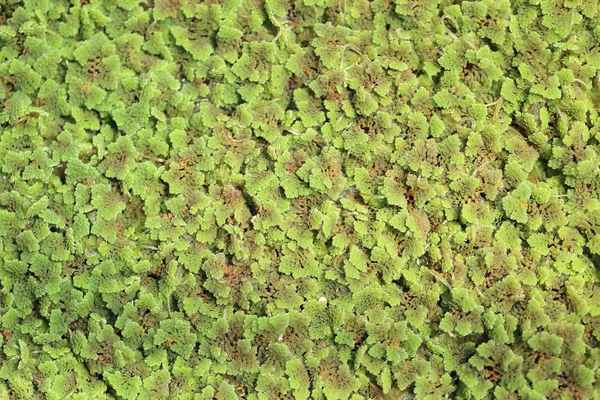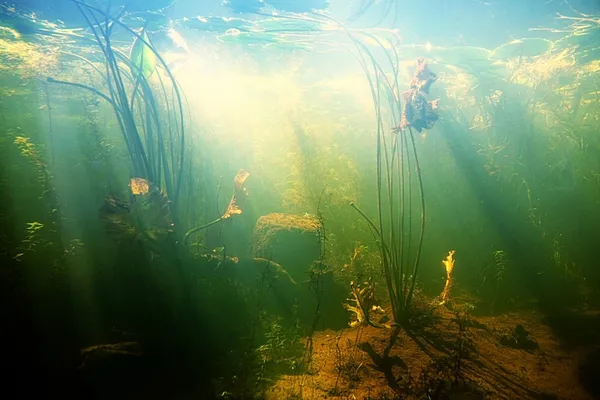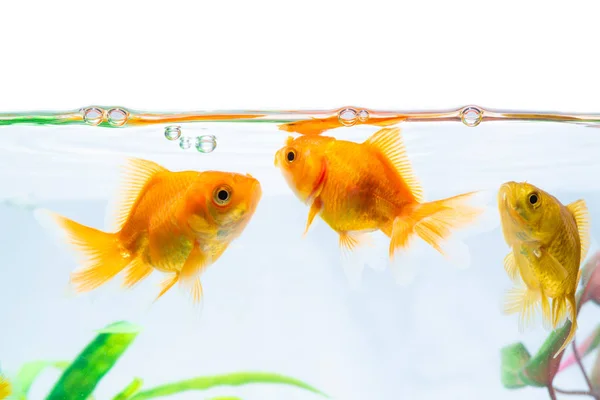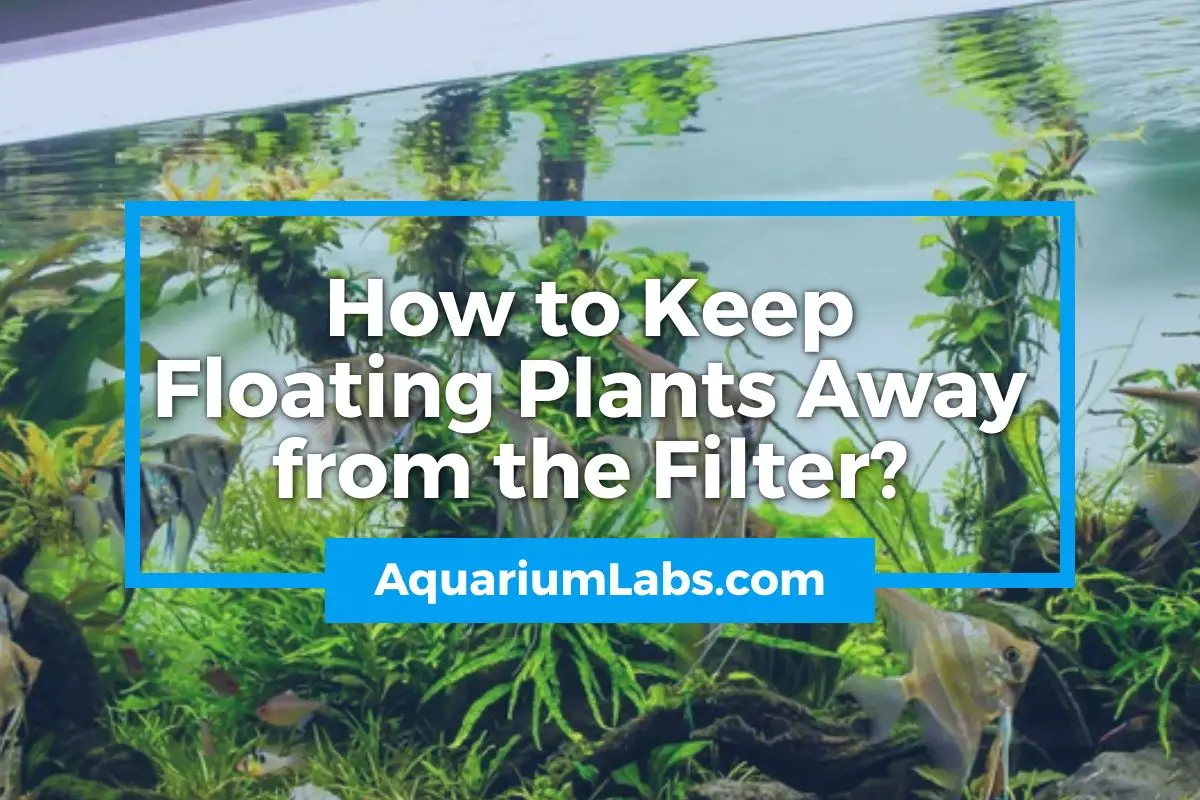As nice as floating plants are, they can cause problems in our aquariums if we allow them to get out of control. A key to good tank health is a balance in all elements, including lush plant growth near the surface. Without it, we may see the following issues arise in an aquarium.
So, how to keep floating plants away from the filter? We’re here to answer that question! Keep on reading.
Why Should We Keep Floating Plants in One Place?
Floating plants do a lot of good. But they can also interfere with our filters, other aquatic plants, and even our fish!
Floating Plants and Filtration
Keeping floating plants away from the filter intake and outflow is important because the plants can easily disrupt the filter – and be disrupted by it. Take a moment to look at your plants. You will notice that the floating side of the leaves is different from the side in contact with the water.
If the filter outflow is constantly submerging a floating plant, you will often see the plants die. The upper surface of the leaves don’t do well being submerged and need to remain at the water surface to be healthy.

Another reason to keep floating plants away is that they will clog the water intake of your filters very easily. Filters with intakes at the surface are especially prone to blockage from plants inside of the tank. But if the outflow is powerful enough, it can drive floating plants down into the water, right against the filter intake.
Shading of Submerged Aquatic Plants
Each floating plant also has a significant advantage compared to plants that live beneath the water surface. By floating, they obtain as much light as possible.
They rarely have to compete with other plants unless they happen to drift under a tree by the water’s surface. And they can spread so aggressively that floating plants can even shade everything beneath them.
This shading of the lower levels can be stressful to fatal for plants that don’t do well in low light environments. Many aquatic plants don’t mind lower light, including Java Fern (Microsorum pteropus) and Cryptocoryne species. But most other species of plants need enough light to photosynthesize properly and will be stressed if your floating plants grow too aggressively.
The flip side of this is that having a floating plant or three is great for keeping algae under control. They grow very fast, soaking up algae nutrients and, at the same time, reducing light getting into the tank!
Free Floating Plants Can Disrupt Feeding
Lastly, too many floating plants can make it harder for fish to find food in your aquarium. Normally, the bright colors of pellets and flakes make anything you add to the tank quick to be devoured.
But some of the food can get lost among the roots and leaves, keeping fish from discovering them. The leftover food will eventually start to rot, contributing to ammonia, nitrite, and nitrate levels.

If you really enjoy heavy accumulations of plant matter, then keeping a crowd of shrimp and snails can help. These small invertebrates spend a lot of time looking around the aquarium for food.
Even among floating plant roots, they will find nearly all uneaten food that your fish miss. Just make sure that your other fish are not so large that they will see the cleanup crew members as just another meal!
How to Keep Floating Plants Away from the Filter?
There are two main ways to keep floating plants in place: physical barriers and preventative means. Let’s look first at physical barriers for an aquarium full of floating plants!
Using a Floating Ring to Keep Plants Inside
The most popular method that is easy to set up in an aquarium is to use a plant ring. These are typically made out of airline tubing that is glued together into a ring shape. Assuming you make it work properly, the floating ring forms a boundary that none of your floating plants can cross.
All that is needed is some aquarium-safe silicone sealant, standard airline tubing, and some universal aquarium airline tubing connectors. You won’t need more than a few feet (or less) of the tubing itself, so don’t buy too much.
Fortunately, it is quite inexpensive and nice to have on hand for any other aquarium-related projects you have in mind.
First, we measure out how large of a ring we need and then mark the point where we need to create a cut using a marker. Next, take a pair of sharp scissors and cut the tubing. You will then join together the two ends of the air tube using one of the tubing connectors.
The silicone sealant has two possible uses: if the air hose connectors aren’t fully watertight, you can place a little around the edges to entirely seal it so water can’t enter.
And if you want the ring to attach in place, you can use a bit of fishing line (or more air hose) to attach it to a nearby surface, including the aquarium glass.
Most people opt to allow the air hose ring to float freely around the tank. But if you want to know how to keep floating plants away from filters, then this is by far the best method!
In case you would like to see step-by-step instructions, here is a great video breaking down how to make a plant ring.
Plastic Bottle Traps for Surface Plants
Another trick to try is using a plastic bottle as a trap for floating plants. If you are a fan of recycling and repurposing used materials, then you are bound to love this!
So long as the plastic within the bottle is known not to leech poisons into the water, it will be safe to use for your plants and fish. And if you are not sure and want to play it safe, try using one of these premium durable plastic bottles from Amazon!
This method relies on securing the trap against the glass of your aquarium, so we will also need silicone glue once again. However, it is simple to set up. You will need to cut a ring of plastic out that is between 1/2 to 1 inch in thickness. Ideally, you will cut from the middle of the bottle.
Next, you will cut another strip of plastic that is about the length and thickness of your finger. Using a cigarette lighter or another small convenient flame, warm the plastic just enough that it bends easily into a V-shape, and then, while still warm, attach the tip of that “V” to the ring.
Lastly, we will use a bit of silicone glue to attach our plastic bottle trap to the wall of our aquarium. And now we have a safe and secure place for floating plants to stay without needing suction cups or anything else!
The main downside of this method is that if your water level gets too low, the plants will escape and float all over your aquarium. So make sure that you keep up with the usual maintenance, and this won’t be an issue!
By the way, you can also create a bottle barrier around the outflow or intake (if near the surface) of your filter. Just cut a long strip of plastic from your bottle that is long enough to form a barrier to plants. And then glue that strip to the glass right around where plants normally intrude!
Fishing Line As A Plant Border
The last and simplest method is to use some fishing line and suction cups to create a border. This method is fast, requires no glue, and can look close to invisible when viewing your aquarium! All that is needed are a pair of suction cups and some clear fishing wire.
Once you decide where you want your floating plants to stay, attach the two suction cups where the boundaries of the border will be. Next, simply measure out enough thread to form a border around the space. Then we can attach one end of the wire to each suction cup.
And that’s all there is to it! So long as there is not too much agitation at the surface area, your fishing line will form a nearly invisible border to keep plants in place. It’s not as secure as using an air hose or bottles, but it looks much better!
So which method is best for you? Perhaps this handy table on controlling aquarium floating plants will help you decide!
| Method | Floating Plant Ring | Plastic Bottle Trap | Fishing Line Corral |
| Difficulty | Moderate | Difficult | Easy |
| Time Required | 20 Minutes | 40 Minutes | 5-10 Minutes |
How Do You Control Floating Plants?
One reason people love to keep floating plants is that they are some of the easiest plants to grow. They are much easier to grow than submerged plants because floating plants get more than enough light by growing along the upper surface of your fish tank.
What’s more, they also have access to unlimited amounts of carbon dioxide in the atmosphere rather than the small trickle that diffuses into the water column if you aren’t enriching the tank with CO2.
Many floating plant species also have long roots that are highly efficient at soaking up nutrients directly from the water column. All of these qualities mean that floating plants tend to grow out of control very quickly compared to other plants.
Here are a few solutions on how to keep floating plants under control in an aquarium!
Removal By Hand
The easiest way to keep floating plants away from an aquarium filter is to prune them aggressively. You don’t usually remove individual leaves, though. Instead, you will want to grab a bunch of the plant material along the surface and remove it entirely from your aquarium.
Many species, like duckweed, red root floater, and water lettuce, all aggressively grow and divide on their own. Even if you toss out most of it and leave just a few plants, it will all cover the surface again in a matter of weeks.
Best of all, it only takes a few seconds or minutes to keep floating plants tidy if they have become too excessive in your aquarium.
Plant-Eating Fish
Another method to keep floating plants under control in aquariums is to add fish that love to eat them! This method is best for smaller plant types like duckweed, Azolla, and so on. Plant-eating aquarium fish will still often eat larger species. But we don’t want them pecking ugly holes in the leaves.
A few fish that love plants include silver dollars, pacu, barbs, and goldfish. While many algae-eating bottom dwellers also eat soft plants, most plants that float aren’t too tasty to them. Goldfish and the other species listed above have the teeth and desire to eat plants they find floating at the surface!

Lower the Light Levels
Last, we can lower the light levels. Since floating plants grow right near the surface of the water, they tend to grow explosively if the light levels are intense.
The downside is that the lower region of your aquarium may become very dark. But if you or your fish prefer a moodier vibe, then this might not be such a bad thing. Lower light levels also help keep algae under control.
Wrapping Things Up
Aquarium floating plants can be a bit of a hassle, especially if they tend to interfere with your filters. But the question remains: “how to keep floating plants away from filter?”
Considering how good they are for aquariums, I simply use one of the quick tip solutions here to make space for keeping floating plants.
And remember, besides using plastic tubing, line, or bottles, you can use the control methods laid out to ensure their growth never takes over your aquarium in the first place!
Related Reading:
- How Do Canister Filters Work?
- Aquarium Lab’s Filter Buyer’s Guide
- How Come My Fish Tank Gets Dirty So Quickly?
- How Can I Prevent My Fish From Getting Stuck In Filters?

